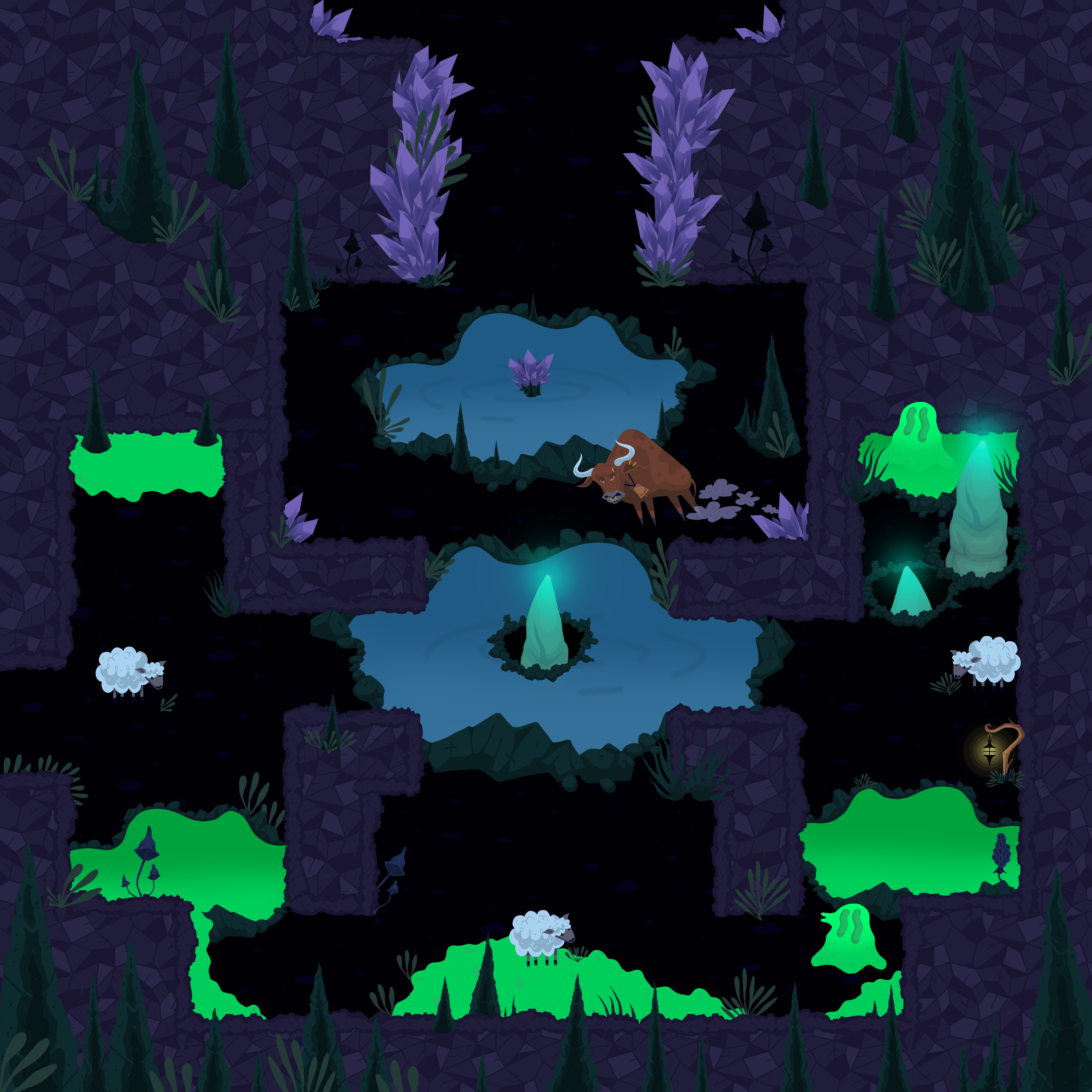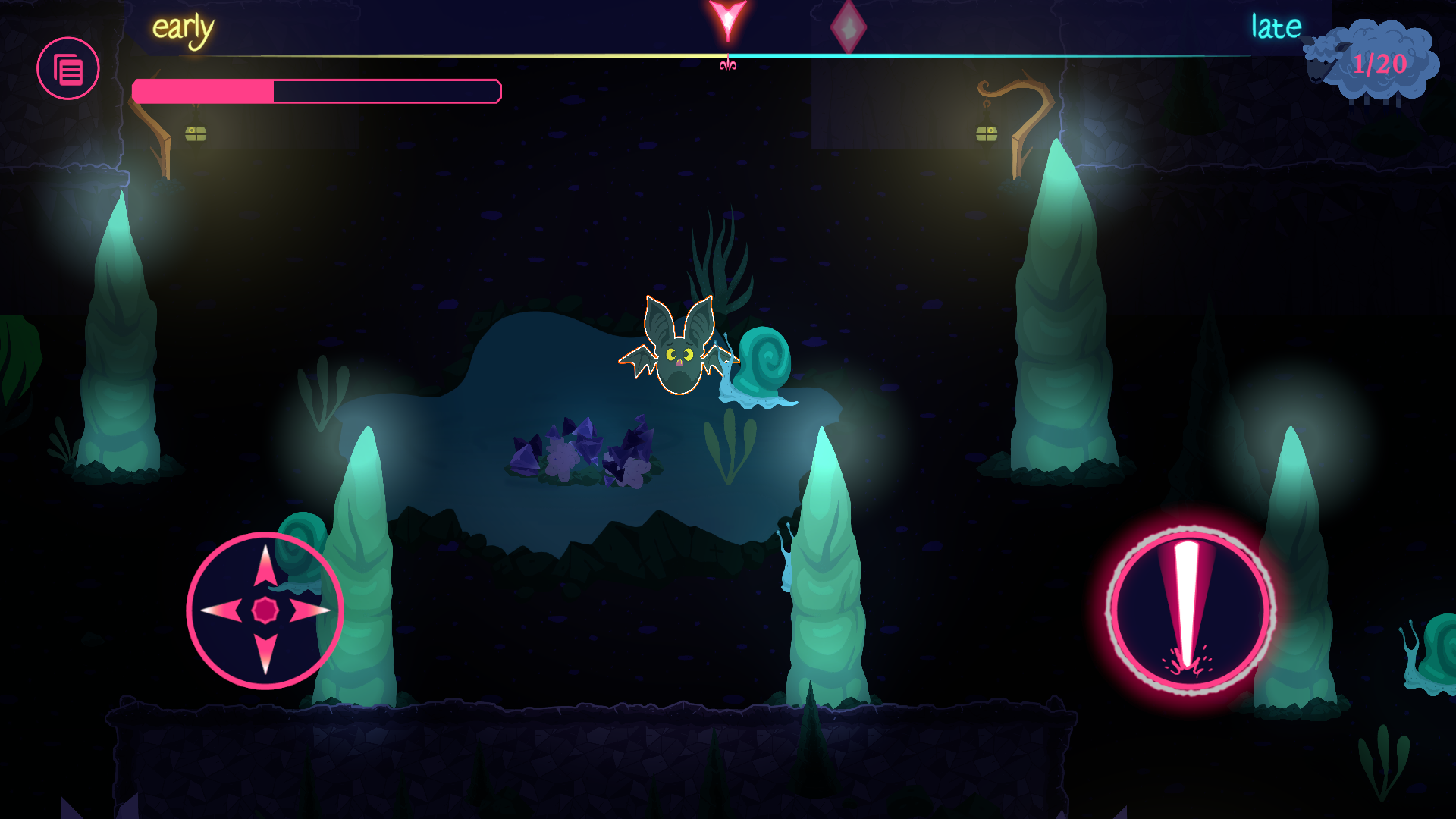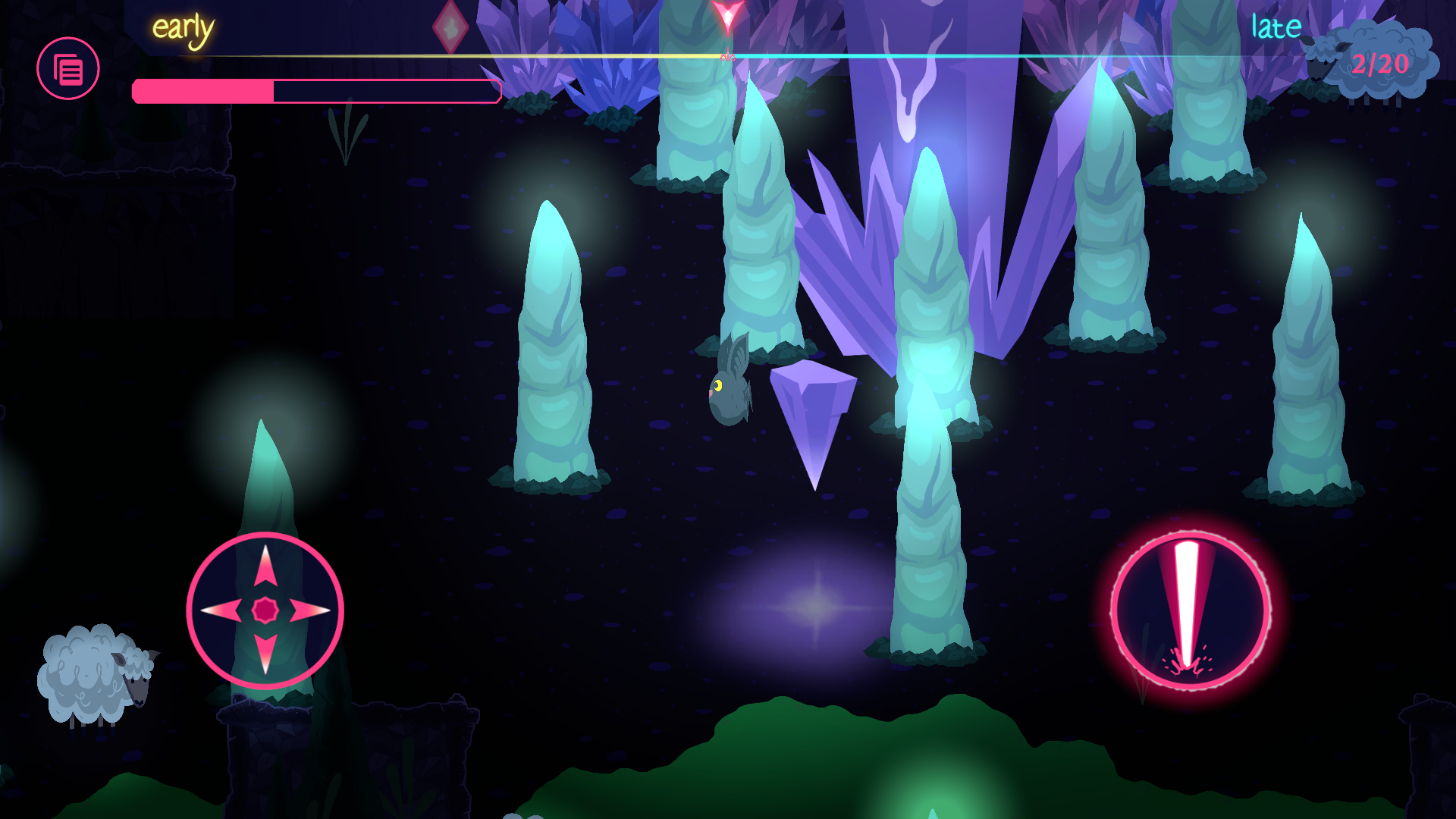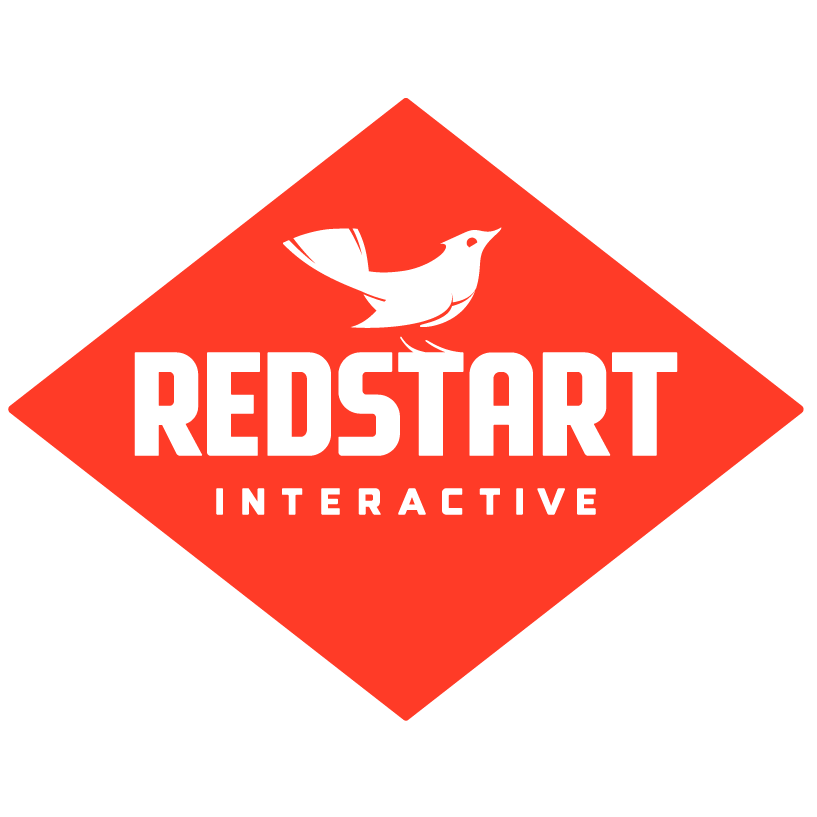This article was written following the second annual Step Up Your Sound Game Jam, an Android mobile game jam where teams developed one-of-a-kind gaming experiences using Dolby Atmos with Wwise. This is a 5-part series; in this first blog, Jon, Brent, Eva, Dylan, and Aaron of the Redstart Interactive team dive into their game Fang Tango.

Hey everyone! We’re the Redstart Interactive team for the Dolby Step Up Your Sound Game Jam. We have Jon Lawitts on programming, Brent Richard on sound design, Eva Lawitts on music composition, Dylan LaPointe on concept and production art, and Aaron Hoffman on UI art.
During the Step Up Your Sound Game Jam, we were inspired to utilize Dolby Atmos to create Fang Tango to highlight the depth of spatialized audio that Dolby Atmos provides by integrating it closely into crisp arcade-style gameplay along with simple and clever enemy behaviors. This inspired us to create Fang Tango’s single-stick rhythm shooting that brings you on dangerous missions to quench your thirst for sheep blood. You shoot, move, and drink to the beat of the music while fighting off hangry monsters, hunting down your prey, and consuming power-ups, so you can… have your sheep and eat them too!
When we began designing how we were going to use spatialized audio, one of our inspirations was the sound design of Call of Duty Warzone, and how they utilized spatial audio to enhance combat and rewards. For example, being able to hear the relative location of a supply box in a building, or the position of an enemy behind or above you, even if you can’t directly see them.
Additionally, we sought to design an experience that would shine on mobile alongside the spatial audio. We drew inspiration from the fast, simple arcade-style gameplay of Vampire Survivors, the dungeon crawling of the Diablo series, and the rhythm-based combat of Bullets Per Minute to give our players a grooving experience that they could instantly connect with.

Dolby Atmos has brought Fang Tango’s audio to life by creating a gameplay experience that extends beyond the playable screen. We used Dolby Atmos to enhance the very cute bat you play as, giving your character the ability to sense non-visible predators and prey based on how far away they are on- and off-screen. We’ll go into detail below on how we utilized Dolby Atmos to enhance the prey (sheep), enemies, and our crystal boss in Fang Tango.
Enemies: Slimy, Wormulon, Ghost Bag, Snail
Since the gameplay in Fang Tango is rhythm-based, we wanted to design the enemies and combat so that if players listen carefully, they could dodge enemy attacks, counter attack or otherwise gain an advantage in combat.
With this in mind, we came up with a variety of enemies and behaviors that start with a warm-up or warning sound to the player, followed by a fast attack. Since all actions in the game are based on the beat of the music, players would have one or two beats to react to the incoming attack, before taking damage.

The audio and positional surround sound was critical for players to be able to dodge attacks accurately and to know where a potential attack was going to come from. It was important to be able to perceive the direction an attack was coming from and how far away it was, and it should include some unique sound elements so that players knew what kind of attack was approaching.

For example, one enemy we created, affectionately named “wormulon” was a large worm creature that blocked the path forward. When attacked, wormulon would descend underground for a few beats, and then emerge, attacking upwards towards the player. There were two critical audio moments that made this enemy work: descending and emerging from underground and a warning sound that played right before emerging.
In order to sell the idea that the worm was descending and emerging from underground, we utilized automation within Wwise to control the sound emitter's position over the course of the worm’s animation. We animated the Z position of the emitter to sync up with the animation so that the positional audio sounded as though it was moving from underground to above ground. We also included some movement on the X and Y axis so that the position of the worm would be easier to perceive through audio alone. Finally, we carefully tuned the attenuation curves and added a low-pass filter, so that the worm sounds would become more muffled as they moved farther away underground.

Hear more at games.dolby.com
As a warning to players, before the worm emerged and attacked, we played a rumble audio cue, along with a particle effect at the position where the worm would emerge. This gave players one or two beats to quickly listen for where the worm was going to pop out and dodge the attack.









评论